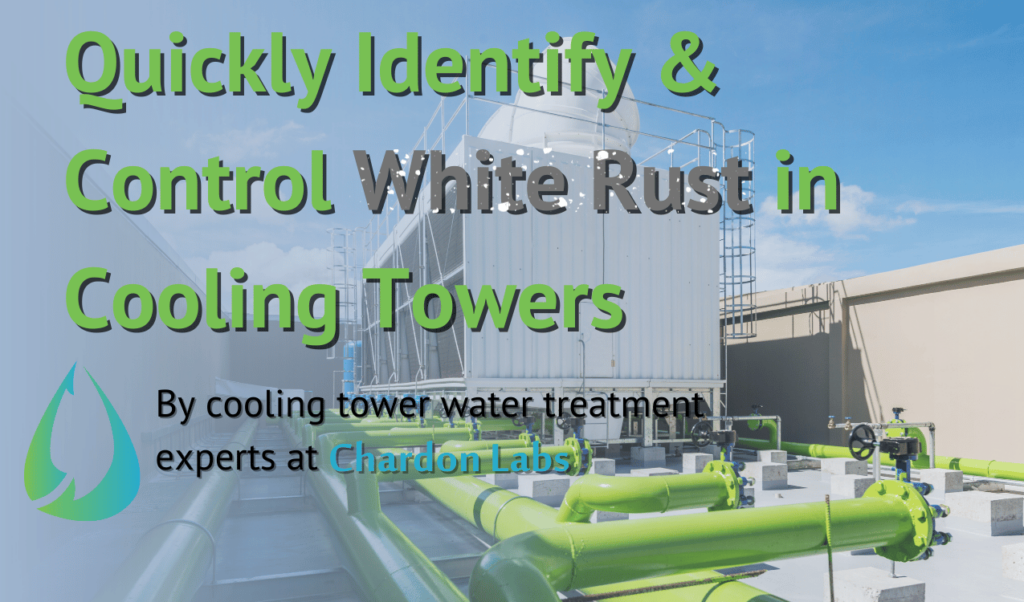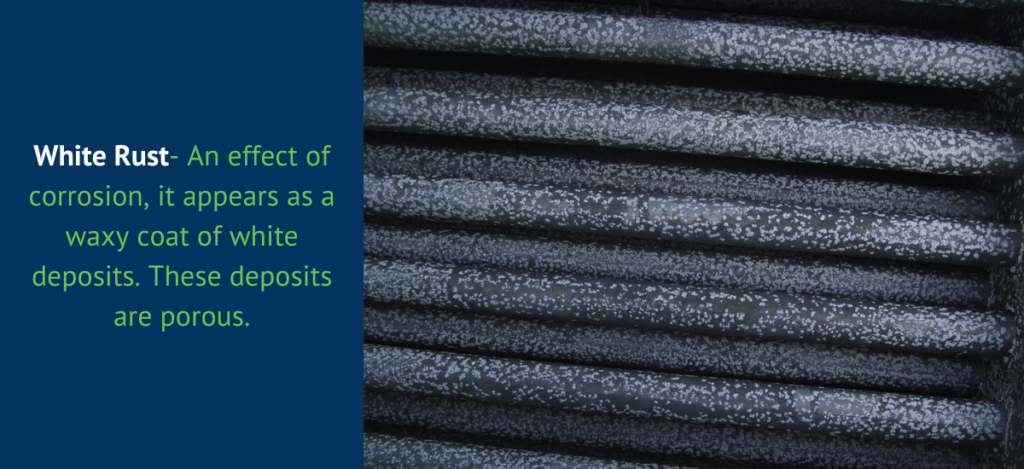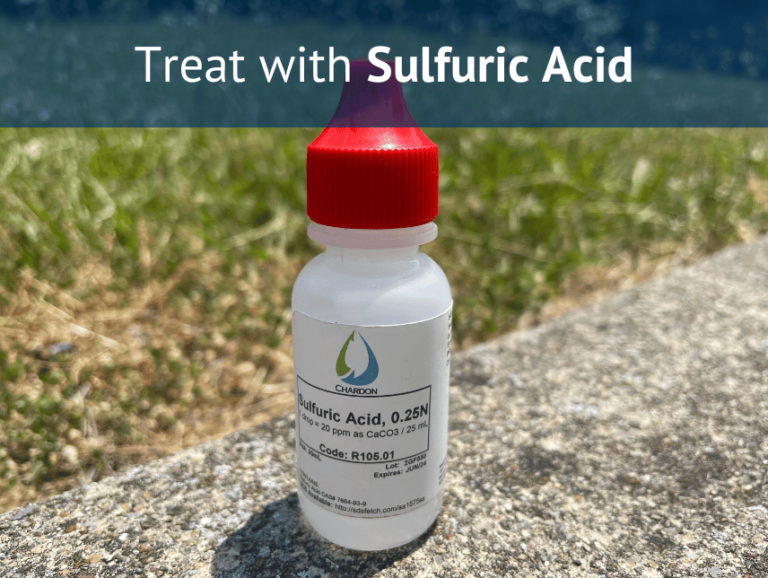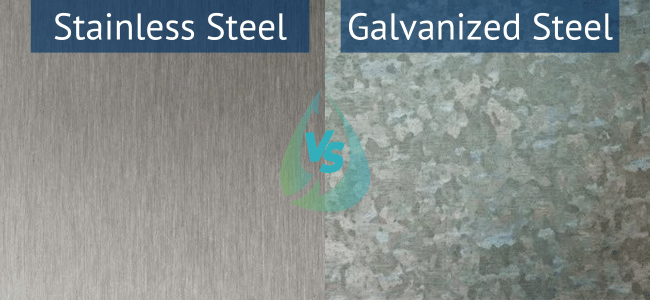
December 5, 2023
White rust is a white, waxy material that can accumulate on the galvanized surfaces of newer cooling towers. Galvanized sheet metal naturally passivates with a protective layer of zinc oxide. Chemically, this passivation layer is a combination of zinc hydroxide and zinc carbonate. It is important to control white rust immediately or more extensive and damaging corrosion will occur. White rust forms when galvanized steel is exposed to water with excess carbonate ions and a pH above 8.3.

Metal was traditionally galvanized using a “wet” dip method that promoted the development of the beneficial zinc oxide passivation layer. New “dry” galvanizing methods were employed by tower manufacturers in the late 1980s which involve more aluminum in the process and have made the formation of white rust more likely.
Excess carbonate alkalinity is the key ingredient in white rust formation and without it galvanized metal is allowed to passivate to form the enduring zinc oxide layer.
New galvanized cooling towers should be passivated (treated) to maintain the pH of the circulating water below 8.3 for a period of six to nine months. This will ensure that the alkalinity of the tower water remains below the level at which white rust forms. Under these conditions, galvanized surfaces form a protective layer of zinc carbonate which helps protect the steel beneath the galvanizing.
Also, the combination of low pH and phosphate-based chemicals can significantly reduce the time needed to properly condition a new cooling tower (30 to 60 days depending on water conditions). The use of phosphates inhibits the production of excessive levels of zinc carbonate, allowing the natural oxide layer to form providing long-term protection.
If you need more help with preventative maintenance strategies, this article below explains three effective ones you can use:

For removing white rust from your cooling tower, it is important to start sooner, rather than later. The problem will grow and become more difficult to get rid of. Depending on the chemical characteristics of your make-up water, you should adjust the controller to operate the system at lower cycles of concentration and therefore lower pH. This option will result in a significant increase in water consumption during the passivation period. The alternative is to install an extra chemical pump that will periodically administer a solution of sulfuric acid to maintain the pH of the tower water below 8.3. The sulfuric acid reacts with and neutralizes the natural alkalinity in the cooling tower water producing only natural by-products. After the six to nine-month treatment period, you should be able to return your water treatment program to its normal operating routine. Alternatively, by adjusting the system to lower cycles of concentration and maintaining a lower pH, the use of acid can be eliminated and replaced with the appropriate phosphate product. Maintaining a level of 300-400 ppm as PO4 for 30-60 days in the presence of 200-300 ppm of calcium hardness will allow the galvanized metal to properly passivate.

Stainless steel is more rust resistant than galvanized steel. Therefore, cooling towers that are stainless are not as susceptible to the corrosion as galvanized ones are. It is worth noting though that stainless steel cooling towers are significantly more expensive. Either way, maintenance is needed for the towers.
If you have questions about this or any other technical matter, call one of our Technical Support Team Members at (380) 224-7395 or by contacting us here.